By Heidi Dahms Foster
It’s no secret that our dogs are a much-loved part of our families, and we want to do all we can to keep them safe. It’s possible to safeguard your dog, if you take a little time to learn the possible dangers and hazards, and do what you can to reduce or eliminate them.
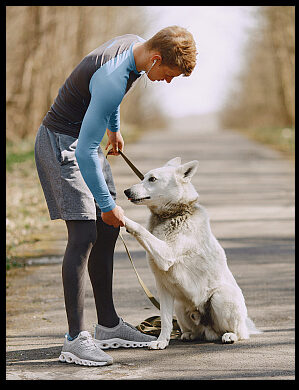
Training
Training is crucial! Every pup should know a few key commands. These are the basics, and any good local dog trainer can teach them to you and your dog. You can also find many good training sites online that will give you the information you need to safeguard your pet.
- Come. This command should be taught as soon as your new pet arrives in your home. You can teach a pup to come for a toy or treat, and build on that behavior. A more reluctant dog can learn starting with a leash, and graduating to a long line, also offering treats or toys. Don’t call your dog to scold it! Always make coming to you fun. A solid recall can save your dog’s life if it starts to dash into the street, after another dog or anywhere else it is unsafe to go.
- Stay. Another lifesaving command. Start with a short duration and build the time. If your dog moves, gently place him back in the same place and be sure to reward the successes.
- Sit and Down. Necessary for a well-behaved dog, and useful in social situations. You can lure your pet into either position with a treat or toy, and praise or reward the action. Then add the stay. You can also teach your dog a “place” command, to go to his bed or area you want him to stay for a time.
- Leave it. This might also save your dog’s life or keep him from becoming ill. Excellent for any situation that might cause your dog harm. Put your dog on a leash. When he shows interest in something that is off limits, distract him and say, “leave it!” Consistency is key, until he will back off anything you ask him to not touch.
- Off. Nothing is more irritating than a dog that will not stop jumping on you or guests. When your dog jumps, gently push him off, and say “off.” Again, consistency. If you do not want a jumper, you must commit that jumping is never acceptable.
- Wait. Useful if your dog is one of those who pushes his way out the door or leaps out of the car before you are ready. It’s good manners and another possible lifesaver. Put your dog on a leash, tell him to wait, and ask him to sit and stay while you open the door of the house or car. Release him with the command “OK.”
- Crate training: Not everyone loves dogs, and if you have guests in your home, or even health providers or delivery people, you need to have a way to confine your dog. Every dog should be crate-trained. Dogs are den animals, and a properly trained dog will see the crate as a safe place. Even if you don’t agree with confining your dog to a crate for any amount of time, crate training is invaluable for the following reasons:
- Dogs can eat and rest without being disturbed by children or other dogs in the household.
- Dogs can be safety confined if you have guests.
- You can quickly confine your dog if you need to evacuate in an emergency.
- Your dog can safely travel to the vet, and will be comfortable if he needs to stay in the vet hospital for a time.
- You can travel safely with your dog. We hear every year about people whose dogs are lost for days, weeks or even permanently after a car accident in which they escaped. At the least, an unconfined dog in your car is a projectile if you stop quickly or have an accident.
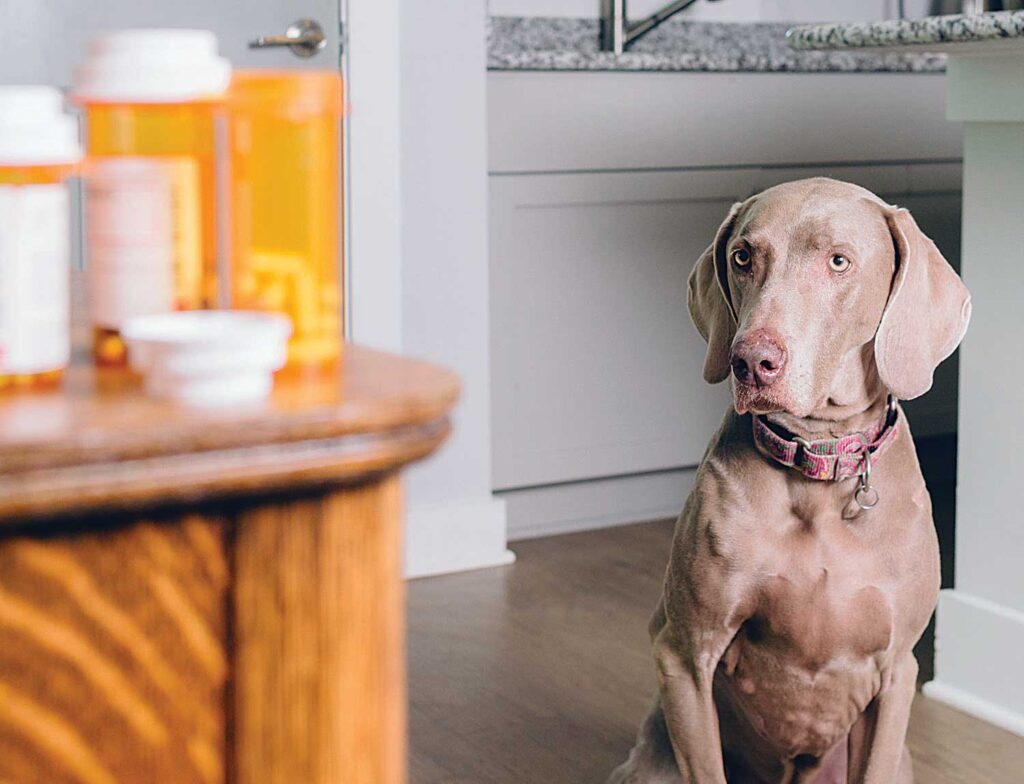
Household Dangers
Dogs, and especially puppies, will chew most anything, including harmful items. One good way to teach your pup to leave things he shouldn’t chew is to fill a box or basket with safe toys.
Every time your pup grabs something they shouldn’t, redirect to a safe toy from the basket, with lots of praise. It won’t take long for him to associate the basket as a place to find an allowed toy when he has the desire to chew and play.
- Pay attention to what your dog can eat or chew: Cover trash cans or keep them inside a cabinet that latches. Dogs love to surf trash cans, and can have problems with spoiled food, bones, plastic and chip bags, and chemicals. Especially pay attention to chip or other bags that have had food in them. When trying to get the food out, dogs suck all the air out, and many have suffocated because they can’t get the bag off their head. Get into a habit of ripping open every empty food bag and discarding it immediately. Never leave empty or partially filled food bags where your dog can get them. Many diet snacks and even some popular peanut butter brands contain xylitol, which is poison to dogs.
- Watch collars and tags. Remove the collar and tags when your dog is home or in a crate, or playing with other dogs. Dogs love to lay on cooling vents in particular, and license or identity tags can catch in these and cause choking. While chewing, dogs can get caught in their playmate’s collar, causing possible suffocation as they try to get free.
- Keep toilet lids closed. Cleaners can be toxic to your dog.
- Move or cover electrical cords and outlets so pets don’t chew on them.
- Pick up potential choking and poison hazards. What household items are toxic to your dog? Makeup, lotions, medications (put those bottles of aspirin and Tylenol out of reach!), certain houseplants, laundry supplies, tools and sharp items, rat poisons and insecticides, string and floss, batteries, cleaners, chemicals, toys and games with small pieces, food and wrappers.
- Research your houseplants. Some houseplants are highly poisonous to pets. Keep your plants out of reach of your dog, and teach them that plants are off limits. Some poisonous plants include: Lilies, Marijuana, Sago Palm, Tulip/Narcissus Bulbs, Azalea/Rhododendron, Oleander, Castor Bean, Cyclamen, Kalanchoe, Yew, Amaryllis, Autumn Crocus, Chrysanthemum, English Ivy, Peace Lily, Pothos, and Schefflera, to name a few.
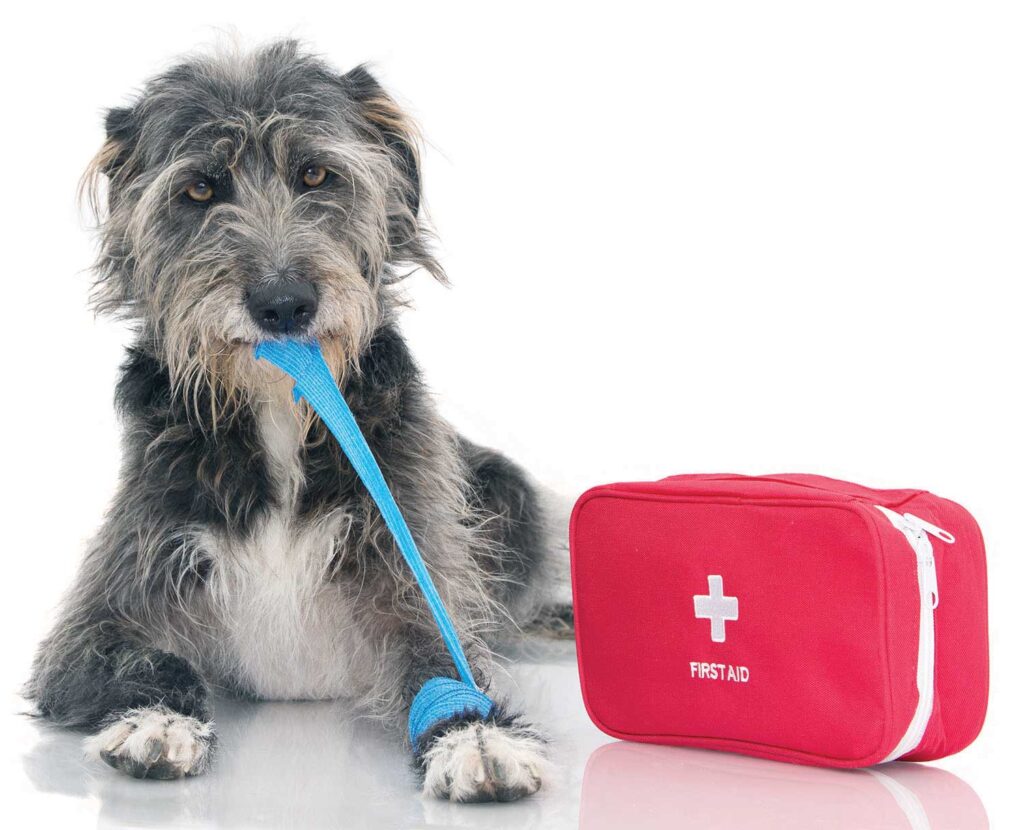
First Aid Kit
Keep a first aid kit on hand and know how to do basic first aid for your dog. The ASPCApro online suggests these items in your kit:
- Absorbent gauze pads
- Adhesive tape
- Benadryl for snake or bug bites (learn how to properly use this).
- Cotton balls or swabs
- Fresh 3% hydrogen peroxide to induce vomiting (always check with veterinarian or animal poison control expert before giving to your pet)
- Ice pack
- Disposable gloves
- Scissors with blunt end
- Tweezers
- OTC antibiotic ointment
- Oral syringe or turkey baster
- Liquid dishwashing detergent (for bathing)
- Towels
- Small flashlight
- Alcohol wipes
- Styptic powder
- Saline eye solution
- Artificial tear gel
- Phone number, clinic name, address of your veterinarian as well as local veterinary emergency clinics.
Make sure to check your pack every few months to make sure nothing has expired or needs to be replaced. Learn how to use the items in your kit, and keep it in a safe place.
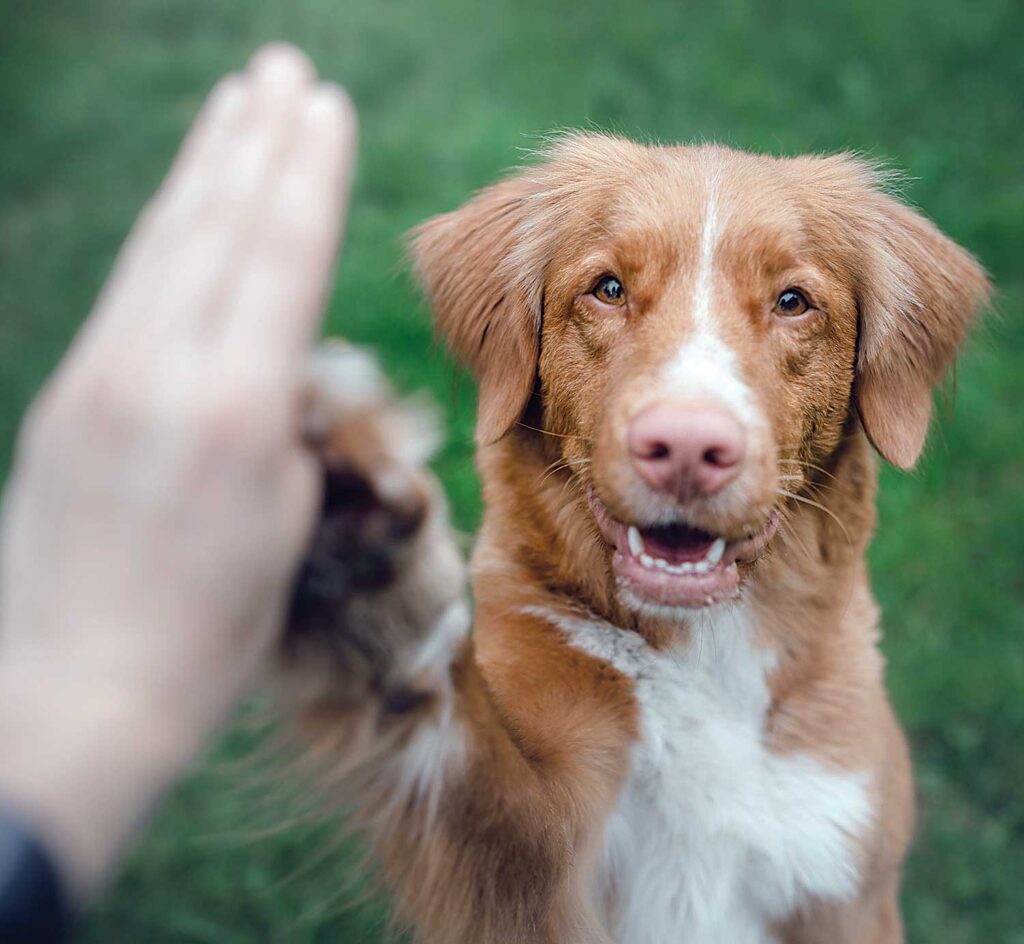
In the Yard
Pay attention to what’s in your landscape!
- Dogs can be allergic to grass or weeds. Pay particular attention to foxtails, which are barbed seeds that make their way into your dog’s ears, nose, mouth and feet, causing infection or other serious problems.
- Watch out for lawn chemicals, weed killers, bug sprays, and fertilizers. Take the time to find out if they are safe for your pet, or if your pet should be kept out of the area for a time after use.
- Check your fence. Is it tall enough, strong enough and in good repair? Do you have adequate shelter and cool, plentiful water if your dog spends time outside?
- Be careful of landscape materials. Some mulches in particular, such as cocoa bean, are highly poisonous to dogs. Make sure you research if you’ll be using it around your dog.
- Insects and critters. Be aware of bees, snakes, spiders, insects and other critters that are common to your area, and watch for them. Have a plan if your dog is bitten or stung.
- Barbecues and picnics: Be aware if you are barbecuing or eating outside. Many popular foods we enjoy might be toxic or dangerous to your dog. Cooked bones can cause choking. Garlic, onions, and chocolate are toxic to dogs. Deli meats such as hot dogs can contain high amounts of nitrates that are unhealthy for your dog, and salty snacks in large amounts can also cause problems. Greasy leftovers can cause pancreatitis.
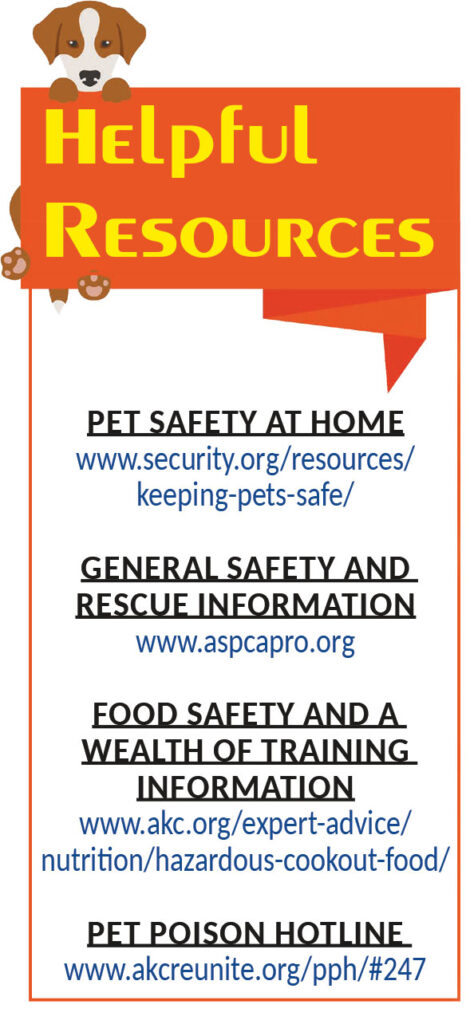
If you think your pet has gotten into something potentially toxic, call your veterinarian right away. When it happens outside of office hours or any time, day or night, weekends, and holidays, you can call AKC Reunite’s Pet Poison Helpline at 800-252-7894 for help.
Be sure to start a relationship with a knowledgeable trainer or dog person you trust. What you learn from them can help make your life with your dog easier and safer.

